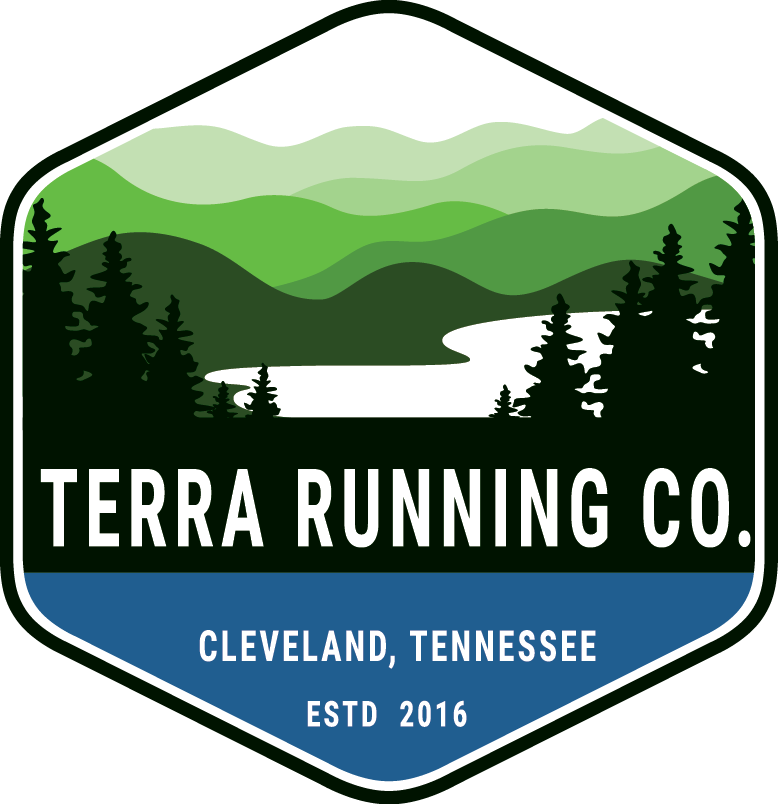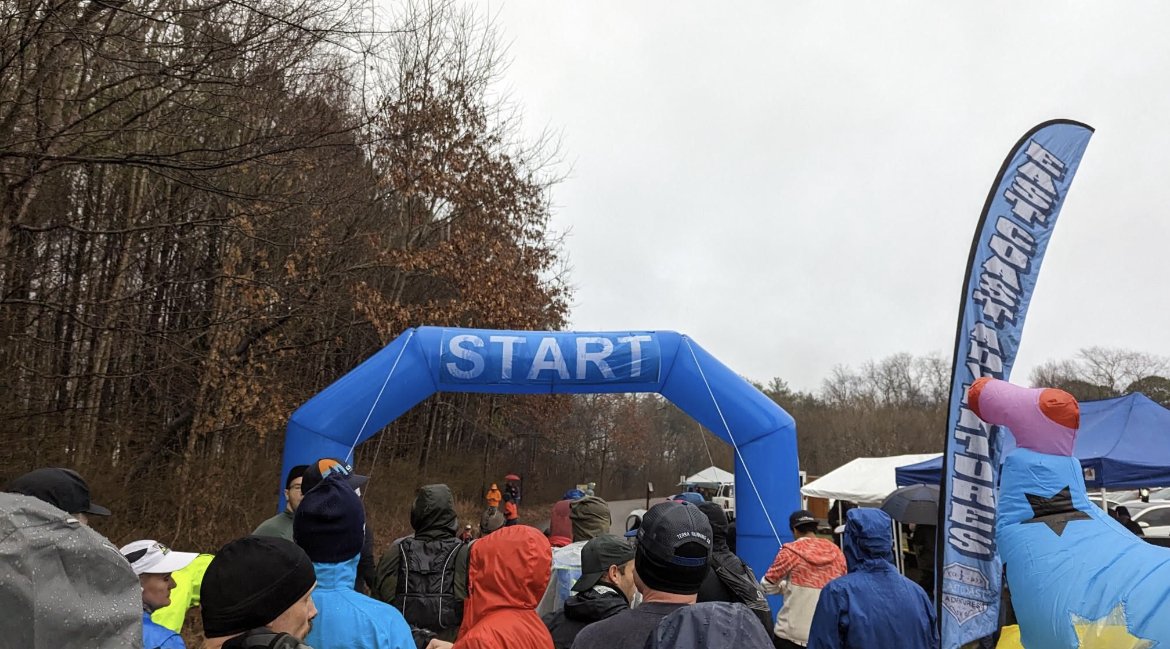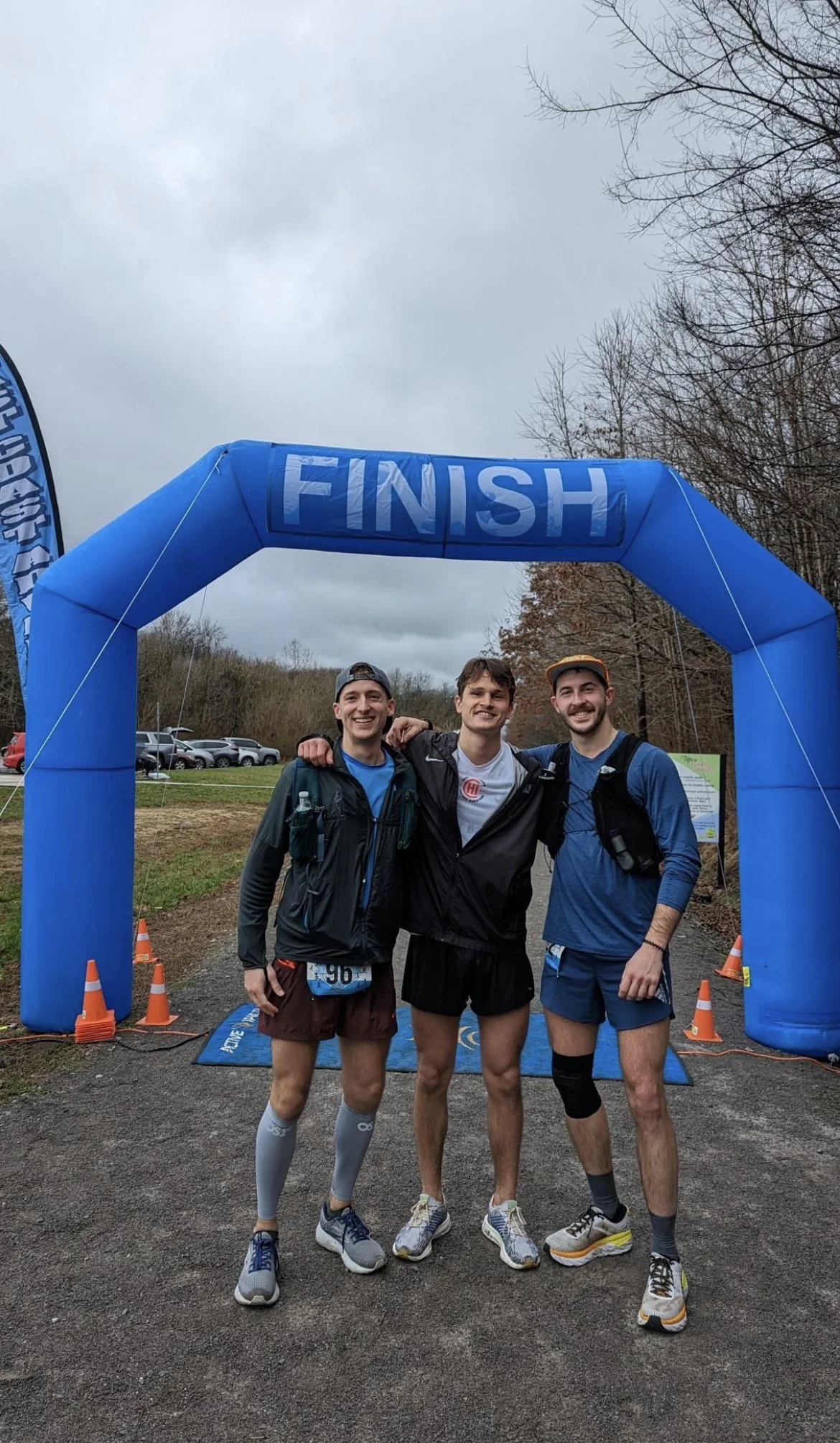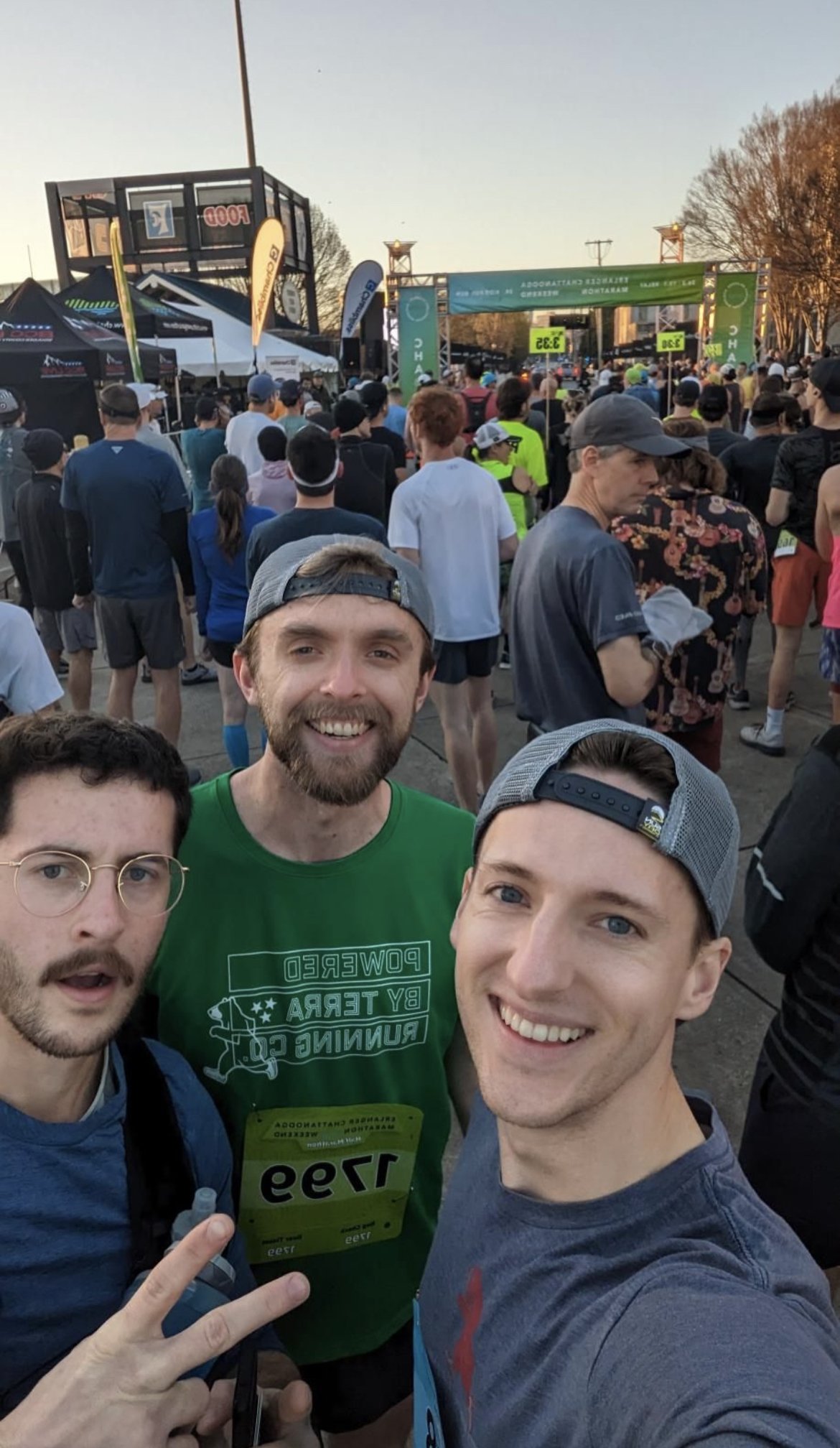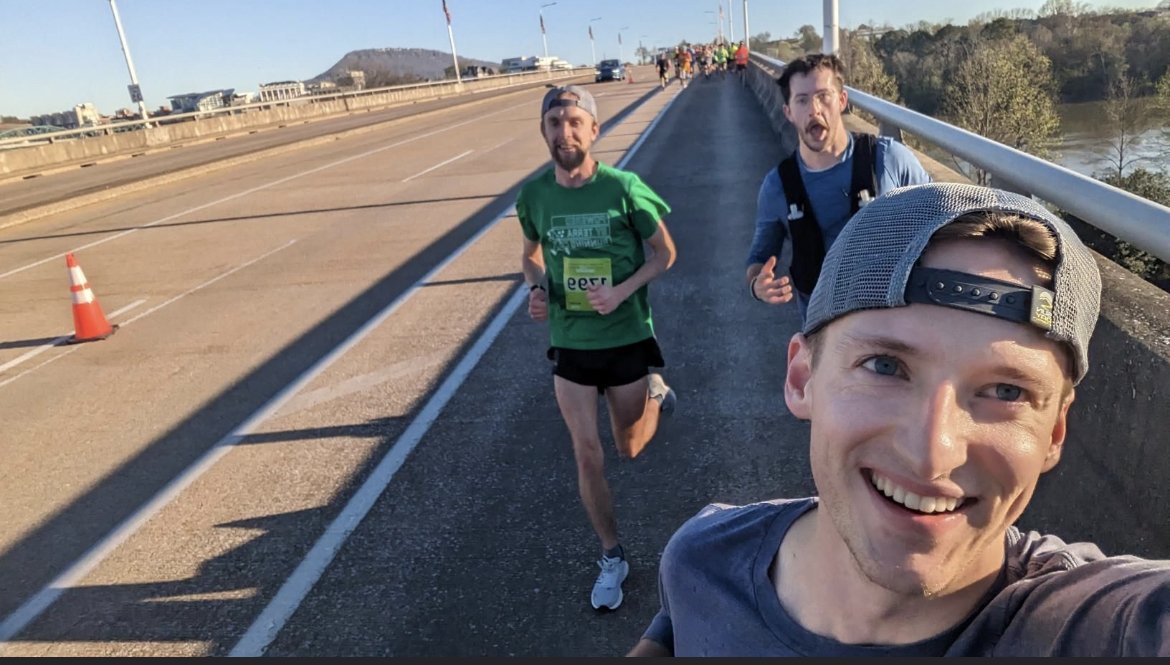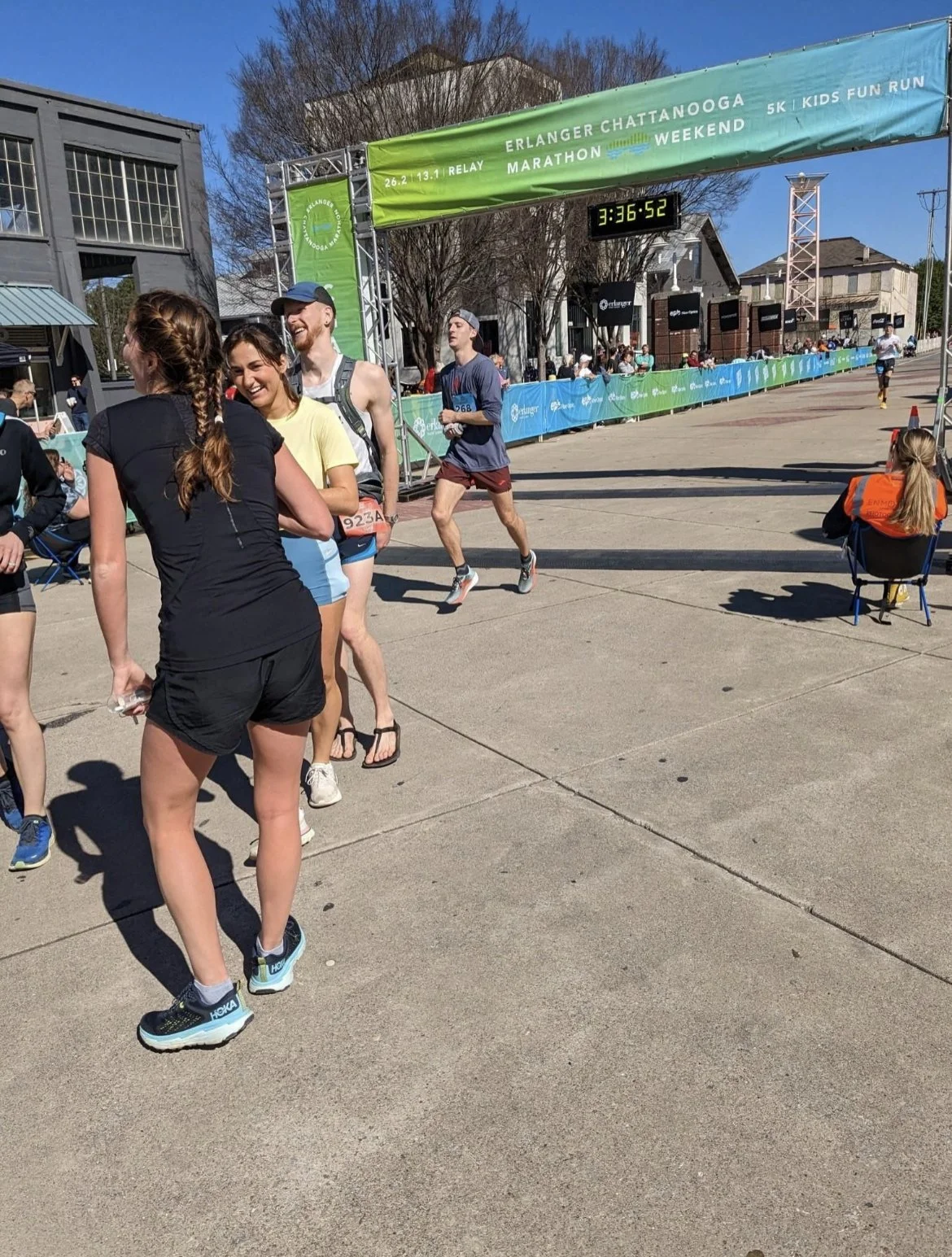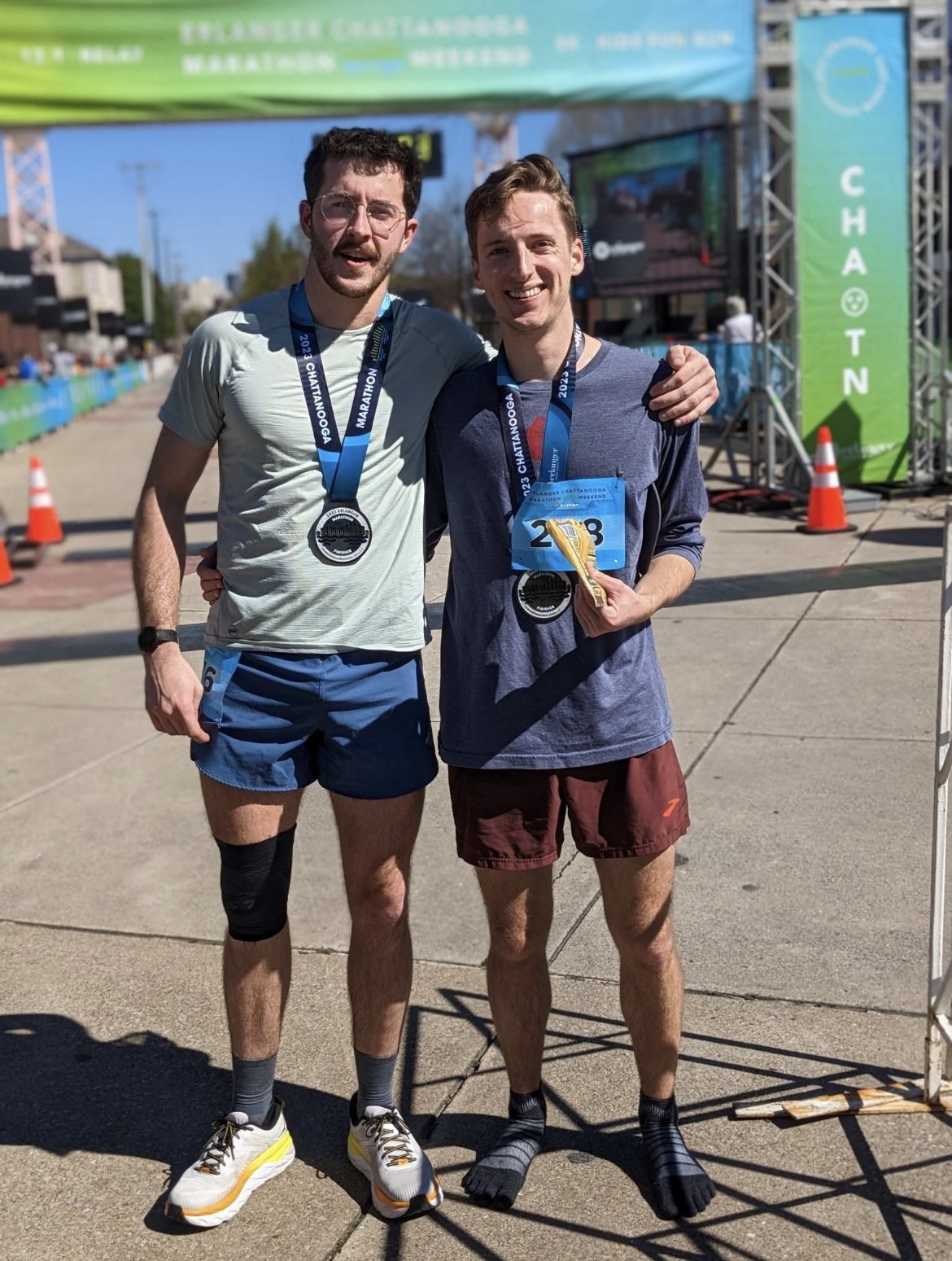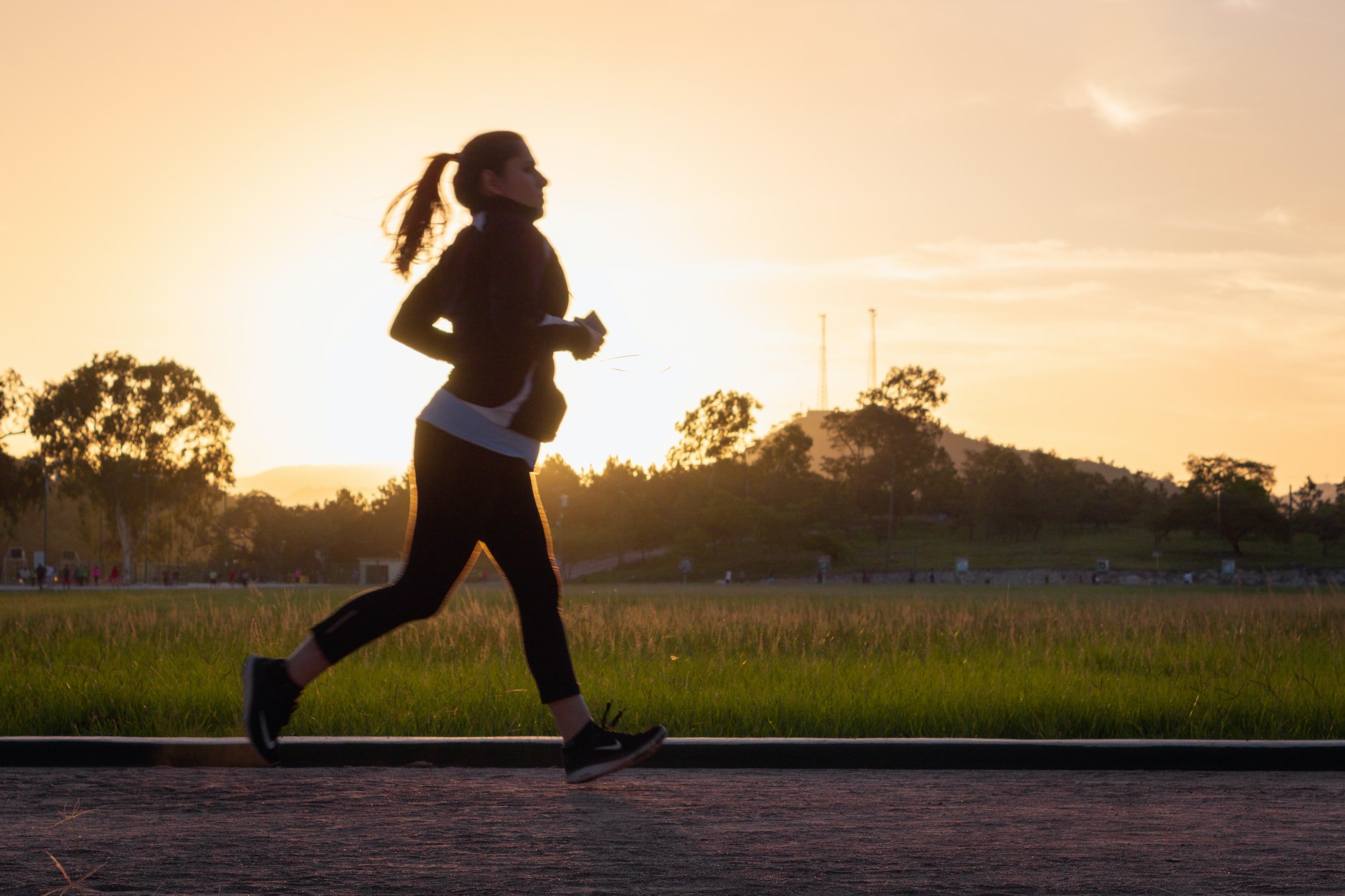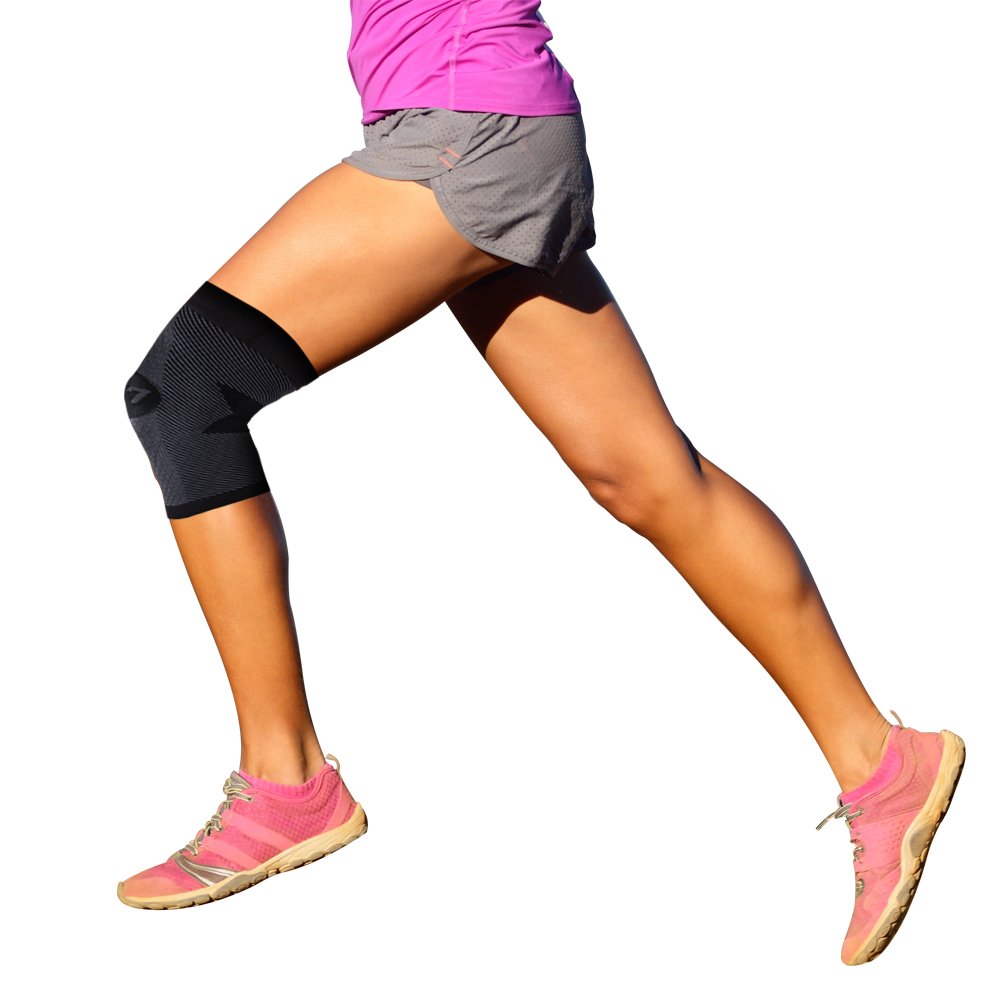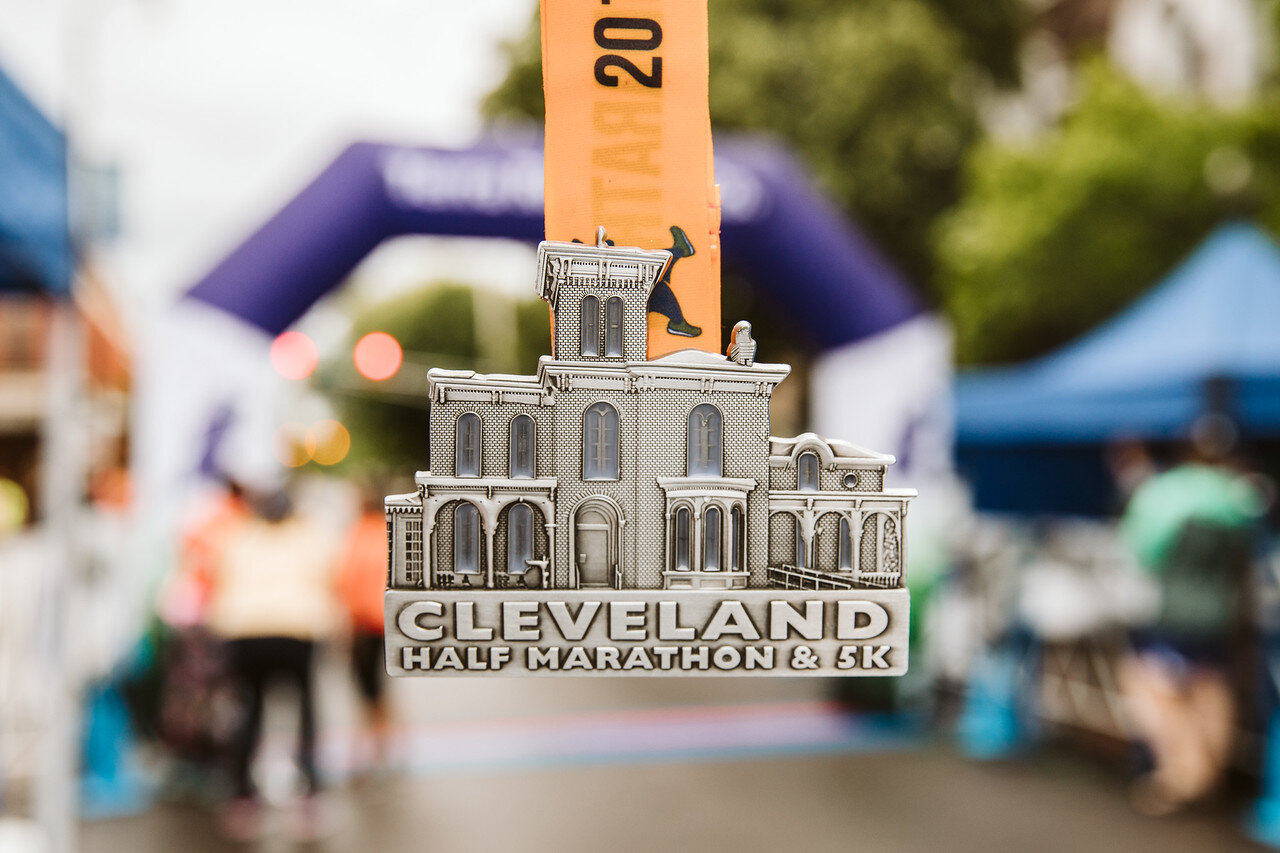
Running the Ultramarathon before the Marathon
In what follows I will share my experience training for the Gone Loco 55k and subsequently the Erlanger Chattanooga Marathon…
For context I returned from my travels in Germany on January 12th. The Gone Loco was scheduled for February 12th and the Marathon was March 5th. After recovering from jet lag, I had less than four weeks to prepare for an ultramarathon. I ran some in Germany (see my previous blog), but nothing longer than an eleven mile run and my weekly distance was no more than twenty miles. So I ramped up my training with an increase in the amount of my runs. Running consistently everyday with two break days a week and a long run on the weekends helped to considerably improve my fitness even in a short amount of time. My long runs never went longer than eighteen miles, however, on the first weekend of February I ran back to back long runs, eighteen on Saturday and sixteen on Sunday. The Terra Trot was especially helpful to my training because it simulated a hint of the ultramarathon experience: breaks every few miles and a slow and steady pace. The week before the ultramarathon I only ran once, a little 3 miler. Day of, my two friends (who I convinced to run with me) and I headed up to Athens. We had not run the course before and only heard that it was flat and graveled. Indeed this 55k course is likely the flattest available. Physically, we each felt underprepared, so we took off decently slow, forcing ourselves not to get caught up with the excitement of our first ultrathon. The course lapped three times with two main aid stations at the start and turn around point. 11 miles in, I was feeling good and I stopped to change shoes. The refreshing feeling of cool shoes on my hot swollen feet felt amazing. I took a shot of fireball from the race directors and took off with a new burst of energy. I surpassed my longest run ever on that second lap, and hit my first marathon distance ever. At the aid stations stops, I paused briefly to refill my water bottle. Mile 27 was the first point where I really started to feel pain. I had never experienced a calf cramp before, but my right calf began tweaking with sharp jabs of pain every few minutes. Running back to the finish felt like a painful crawl, but I committed to not walking. Hobbling, I made my way back towards the finish. My watch displayed 34 miles and I knew this 50k race was indeed a 55k. Every .1 mile marker sign began to pass me by slower and slower. I started to heavily favor my left leg as my right leg cramped more frequently, but mentally and physically I had not bonked. I pushed through and made it to the finish line. The last stretch, with the finish line in sight, I actually increased my speed to a full run. David Kyle caught me as I blew into the finish. My friends and family were all there smiling as I teared up every so slightly, and felt the wave of shock rush through my now halted body that had been running for five hours and seventeen minutes. I watched my friends finish soon after me, listened to their similar experiences of pain and suffering but utter joy at the accomplishment.
Three weeks later, I was at the start line for the Erlanger Chattanooga Marathon. I had run roughly five times since the 55k. I had a new pair of shoes, made specially for a faster marathon, the Brooks Hyperion Max, one handheld water bottle, and 8 nutrition gels stuffed into my pockets. This would be my first official marathon. Unlike the ultrathon, I told myself that I would not walk at all, not up hills, and not at aid stations. In fact, probably unwisely I did not use the first few aid stations I saw. The race started with the half marathon runners, so it was crowded and quick. I tried to keep a slow pace at the beginning but ended up going around an 8:30 pace because of the quick flow of runners around me. Brennan, my fellow Terra twin, was with me, running the half-marthon, and Dillon (who ran the Gone Loco with me) was doing the full. Dillon and I were separated around mile seven, however, he stayed relatively close behind me. He was close enough to see the 3hr 40 min pacer and I make the wrong turn at mile 14. My watch started buzzing, and I looked down to see that Dillon was calling me. I answered and he, panting, told me that I had cut off two miles of the course by making the wrong turn, and I, huffing back, argued that the pacer was with me so that it was not possible. But sure, enough, I passed the mile 17 marker and I was only at mile 15 on my watch. So, begrudgingly, I turned around (the pacer and two other runners decided not to turn around, but I did not want to risk cheating). I ran back to a timing mat checkpoint. There was a worker there to whom I explained my situation, while running. I told him I would make up my distance in the parking lot behind him. So, I ran two miles in a hotel parking lot and showed him my watch once I was at 16.8. I continued on, still ahead of Dillon. This was a big setback mentally. I was a bit angry at the pacer for taking us the wrong way, and sore from running tight laps in a parking lot. Nonetheless, I brightened up when I looked around. I was running all alone. I saw no one in front of me and no one behind, and, furthermore, the street ( just past the aquarium) was empty of cars and spectators. It was quiet except for my footsteps, as I climbed the hill to the bridge. I felt pain at the top of my foot at this point, which I assumed to be a stress fracture, regardless, I pushed through, slowing down ever so slightly. I called Dillon back as I ran over the bridge; I told him about my parking lot experience and discovered that he was not far behind. I encountered few runners beyond this point, but when I saw them ahead, I made it my slow and steady goal to catch them. Four miles to the end of the marathon, there was no shade and no spectators. I listened to a song I liked that matched my cadence well, and decided to play it on repeat for the rest of the race. I rounded the final corner and looked way down, probably a half mile, towards the finish line arch. Getting excited, I started to push faster, but the distance was more than anticipated. My final sprint created a forced bonk right as I finished at 3:35:30. I was really happy with my time as I had no expectations, but soon went into a fog of dehydration. Dillon came in soon after.
I ran an ultramarathon before my first marathon, and it worked okay for me. I am happy with my times, and my ability to finish with minimal walking for the ultramarathon and no walking for the marathon. Nonetheless, if I could change the past, I would have sought to prepare much more for these races and distances. Base mileage is incredibly important, and jumping into long distances without proper training can shock the body. I believe I am lucky that I had no long lasting injuries. For the future, I would like to work towards a 70k race ( I am currently looking at the Tushars Mtn race in Utah in July), but I will do so with many 40 mile weeks beforehand, instead of just the one I had before my first ultramarathon.
The Importance of Base Mileage
Base mileage is the first step to any specific running goal. In fact, building your running base is one of the most essential parts of any fitness goal. These are the slower, consistent, weekly runs that you do. Whether you want to become faster or enjoy your runs more, base mileage is the first step.
Starting out with consistent, easy runs of three to six miles, three times a week, before building up to five days a week, will help to prepare your body for any harder training plan. Increasing your running speed or feeling like your runs are easier is all dependent upon your running fitness; the more often you run, the higher your fitness will be.
Runners who want to add sprinting workouts or tempo runs to their routine will need a high base mileage to see the most improvement. Similarly, individuals who are getting into running or who are trying to grow their fitness need to develop their base mileage in order to initiate a new healthy habit. Base mileage is what prepares and develops your body, as well as prevent injury. It can be exhausting to run everyday, so it is important to start out with a low base mileage and work from there.
Base mileage is often acclaimed for building your aerobic endurance. This is important because you will want to build your aerobic abilities before attempting any anaerobic exercises (these are fast paced workouts that build up lactic acid in the muscles). Thus, base mileage runs should not be strenuous or fast-paced. They serve merely to grow your endurance and fitness.
I think most of us understand the concept of base mileage. You need to have some foundation, some base level of fitness, to accomplish more specified goals. It can, however, be easy to get caught up with the idea of those specific goals and discount the importance of the slower, mundane, daily run. Nonetheless, working towards those goals will be fruitless without the consistency of base mileage.
Compression: It Really Works!
I used to be a compression skeptic. Sure, the tight, bright colored compression sleeves *look* cool, but do they work? Are tight socks worth the hassle of getting them on and off? Aren’t they hot? How will I get tan? All of these questions gave me pause when going for compression socks in the past, until the “Shin Incident of 2021.”
I never had issues with my shins. I have been running for years on hard surfaces, but always had good shoes so I never dealt with sore shins or shin splints. In 2021, I started training for a triathlon. I would run 2-3 times a week, along with multiple bike rides and early morning swim sessions sprinkled in. Even though I was running less (or maybe because I was running less?) my shins started to hurt at the beginning of every run. To combat the shin issues, I would try the advice I dish out to customers daily. I stretched before and after each run. I tried to start the run at a slower pace or even a walk to warm up. When those didn’t work, I decided to try calf sleeves.
The OS1 Knee Compression Sleeve brings down swelling naturally while adding support.
Terra Running Company carries OS1st compression products, and they really are some of the best compression on the market. I tried the plain black calf sleeves and I cannot overemphasize how impressed I was. I was an instant compression convert. I wore them after my run a few times, and then when I felt that my shins would be really sore, I would wear them during a run. A few months later, when I fell hard on my knee trail running, I got a OS1st compression knee sleeve to bring down the swelling naturally. It was a lifesaver!
Even though it was the heat of the summer, the calf sleeves didn't make me any warmer than I would have been without them. According to their website, ”OS1st uses top-quality, high-performance, moisture-wicking materials with a silver-ion anti-microbial treatment. Materials include Lycra Spandex, micro-nylon, nano-bamboo charcoal, and Merino Wool treated with silver-ion for moisture-wicking and anti-microbial.” All that to say, these aren’t cotton socks. These aren’t even cheap polyester socks. These are meant to sweat in, so don’t let the fact that they cover up your skin scare you away.
You may be wondering what makes OS1st different. I’m sure you’ve seen ads for other brand’s “Buy 1 get 45 free” compression socks, or something that seems too good to be true. Well, it probably is. Not all compression is created equally. Their website states that, “unlike some compression products, all OS1st products are 100% medical grade compression. We apply our compression with our patented Compression Zone Technology ® which targets specific joints and muscles so you can be active and pain-free.” These aren’t just tight socks. They use targeted Compression Zone Technology, which varies the compression based on where on your body it is. The compression knee sleeves, for example, have a tighter compression above and below the knee cap to stabilize and give support.
Terra Running Company carries compression products from OS1st for all sorts of body parts: quads, knees, shins, plantar fasciitis (a popular one!), elbows, and more. If you are interested in learning more about how compression can help you stay active, stop in and let me, Tiff, Asher, or Brennan measure and help you find the best compression for your issues! Avoid your own “Shin Incident of 2022."
What We're Wearing: Shoes (Asher)
Brooks Hyperion Tempo
What shoe are you currently running in and what were you running in before this shoe?
I have a cycle of shoes that I run in, and my most recent addition has been the Brooks Hyperion Tempo. Before this addition, my shoes consisted of the Brooks Bedlam 3, the Brooks Glycerin 19, the Altra Escalante and Vanish, and the On Cloudultra (for trails).
What have you liked/loved about the shoe?
For the Hyperion, in particular, I really like how light weight and springy it is. It stays snug to my foot and is super breathable. I have been using this as a short distance trainer, but I have definitely done some long runs in them (15 miles).
Anything you don't like about the shoe?
After a couple longer runs, I decided that this shoe needs to stay as a trainer/racing flat. The Hyperion is designed for speed work and training, and so I don't plan to use it longer than a three-mile run. There's not a lot of cushioning to the shoe, so it's not preferred for distance.
Who would you recommend the shoe for?
I really like this shoe as a trainer or racing flat. It would be my first choice for someone looking for a racing flat from Terra. I would also recommend this shoe for runners who are hoping to increase their race times and are looking for a faster ride. This is a good shoe for track athletes and school runners. I would, however, not recommend this shoe to someone just getting into running or looking for a causal jogging or long-distance shoe.
What shoe are you planning on running in next?
If I do not update my Brook's Glycerin 19s (these have been the best for all my longer runs), then I plan to run in the Brooks Levitate 5.
Saucony Ride 14
What advice would you give someone who is looking to venture out and try a new shoe or brand?
There's a lot to consider when exploring new running shoes. Budget and color can seem like the first considerations for a new pair of running shoes, however, once moving passed these decisions, I would recommend having a goal in mind for the specific pair of shoes that you are getting. When looking for running shoes, you'll want to know how many miles you plan to use the shoe for and how long each of your runs might be. If you have multiple desires, you'll want to tend towards a less specialized shoe like the Saucony Ride, or, if you want to specifically train for a marathon, you'll want to look for well-cushioned shoes with a comprehensive rubber sole, like the Brooks Glycerin.
Anything else you would like to share?
If you are looking to run races in the future or increase your personal race times, I would recommend using at least two pairs of shoes: one for training and one for race day. You might think that you'll want to race in shoes that are worn and broken in (this is partly true because you won't want to race in a stiff or painful shoe) however, I would recommend prioritizing one shoe for training and one for racing. If you train in a shoe that does not assist you or make it easier to run, you will be strengthened, whereas, if you train in a shoe that makes it more efficient and easier to run, your training will be less effective since the shoe is doing the work for you. To use an example, if you trained in a Saucony Triumph, a heavier cushioned shoe, and you raced in the Brooks Hyperion, a lighter-weight and springy shoe, on race day, you would benefit from the reduction in weight and the springiness. If you had only trained in the Hyperion and raced in it, you would receive no race day boost. For everyday runs and training shoes, I would recommend shoes that do not attempt to assist the speed of your runs. These are usually zero-drop or heavier shoes. For race day shoes, higher drops and springier cushion will be helpful.
